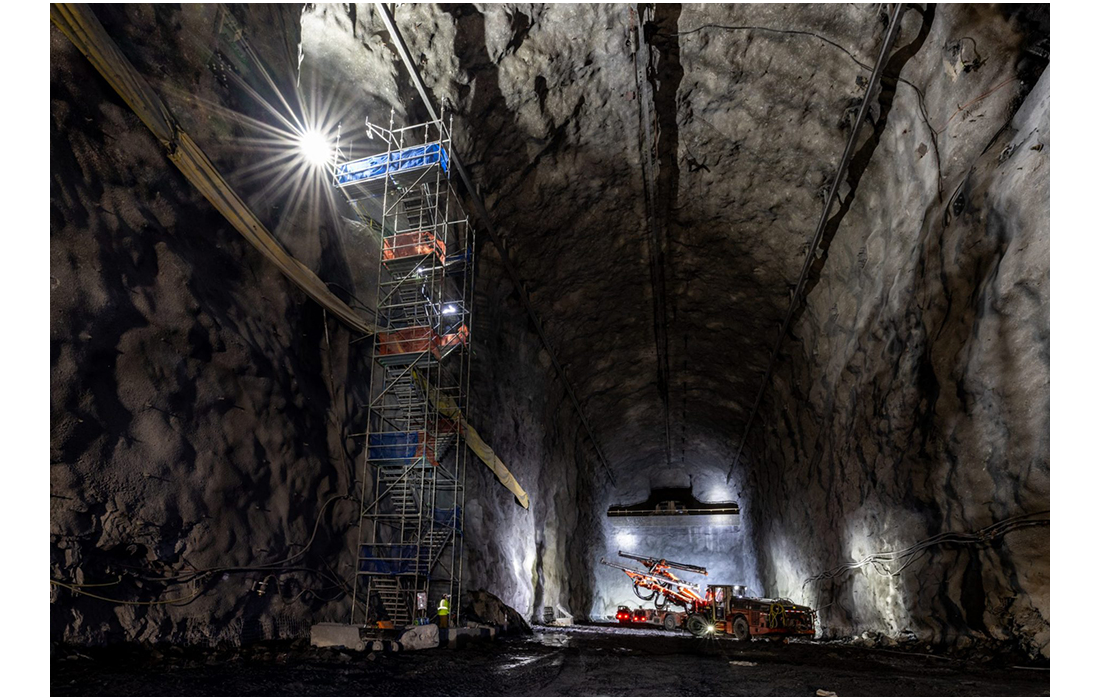Life Sciences Building, Room 206
501 S. Nedderman Drive
Box 19047
Arlington, TX 76019
Excavation of massive caverns for Fermilab's DUNE detectors completed

Excavation work has been completed at the site of the future home of the gigantic particle detectors for the international Deep Underground Neutrino Experiment. Now the work shifts to readying the site for installation of the first of four detectors, parts of which are being constructed at The University of Texas at Arlington.
Located a mile below the surface at the Sanford Underground Research Laboratory in Lead, South Dakota, the three colossal caverns are at the core of a new research facility that spans an underground area about the size of eight soccer fields.
Hosted by the U.S. Department of Energy’s Fermi National Accelerator Laboratory (Fermilab), DUNE scientists will study the behavior of mysterious particles known as neutrinos to solve some of the biggest questions about the universe. These will include why the universe is composed of matter; how an exploding star creates a black hole; and if neutrinos are connected to dark matter or other undiscovered particles.
Jaehoon Yu, professor of physics, and Jonathan Asaadi, associate professor of physics, are leading UTA’s involvement with the project.
“The actual excavation took only a year, which is amazing,” Yu said. “It’s great that the excavation work is finished and now preparations can be made for the installation of the detectors. This is an exciting time.”
The caverns provide space for four large neutrino detectors—each one about the size of a seven-story building. The detectors will be filled with liquid argon and record the rare interaction of neutrinos with the transparent liquid.
Trillions of neutrinos travel through our bodies each second without leaving a trace. With DUNE, scientists will look for neutrinos from exploding stars and examine the behavior of a beam of neutrinos produced at Fermilab, located near Chicago, about 800 miles east of the underground caverns. The beam, produced by the world’s most intense neutrino source, will travel straight through earth and rock from Fermilab to the DUNE detectors in South Dakota. No tunnel is necessary for the neutrinos’ path.
UTA’s Department of Physics has been involved with the DUNE project since its earliest stages. In January 2016, UTA hosted a four-day international planning conference, organized by Yu.

UTA physicists will build portions of the first two detectors to be installed at the South Dakota site. Specifically, they will construct modules of the field cage—100 modules for the first detector and all 200 of the modules for the second detector. The work will take place in the Chemistry and Physics Building.
“We’re going to need to recruit a lot of students to help with this work,” Yu said. “We need to bring them in as freshmen or sophomores so we can train them and they can be with the project as long as possible, including helping with the installation.”
Yu will lead UTA’s efforts for construction of parts for the “far” detector in South Dakota. Asaadi is working on portions of the “near” detector at Fermilab.
UTA physicists also assisted in the construction of prototype detectors which are being used to test the kind of detectors which will be used at DUNE. These prototypes are located at CERN, the European Organization for Nuclear Research, in Switzerland. CERN is the site of the Large Hadron Collider particle experiment, in which UTA faculty and students are also heavily involved.
Workers will soon begin to outfit the caverns with the systems needed for the installation of the DUNE detectors and the daily operations of the research facility. Later this year, the project team plans to begin the installation of the insulated steel structure that will hold the first neutrino detector. The goal is to have the first detector operational before the end of 2028.
The DUNE collaboration includes more than 1,400 scientists and engineers from over 200 institutions in 36 countries.
This story includes information provided by Fermi National Accelerator Laboratory.

--
The UTA College of Science, a Carnegie R1 research institution, is preparing the next generation of leaders in science through innovative education and hands-on research and offers programs in Biology, Chemistry & Biochemistry, Data Science, Earth & Environmental Sciences, Health Professions, Mathematics, Physics and Psychology. To support educational and research efforts visit the giving page, or if you're a prospective student interested in beginning your #MaverickScience journey visit our future students page.